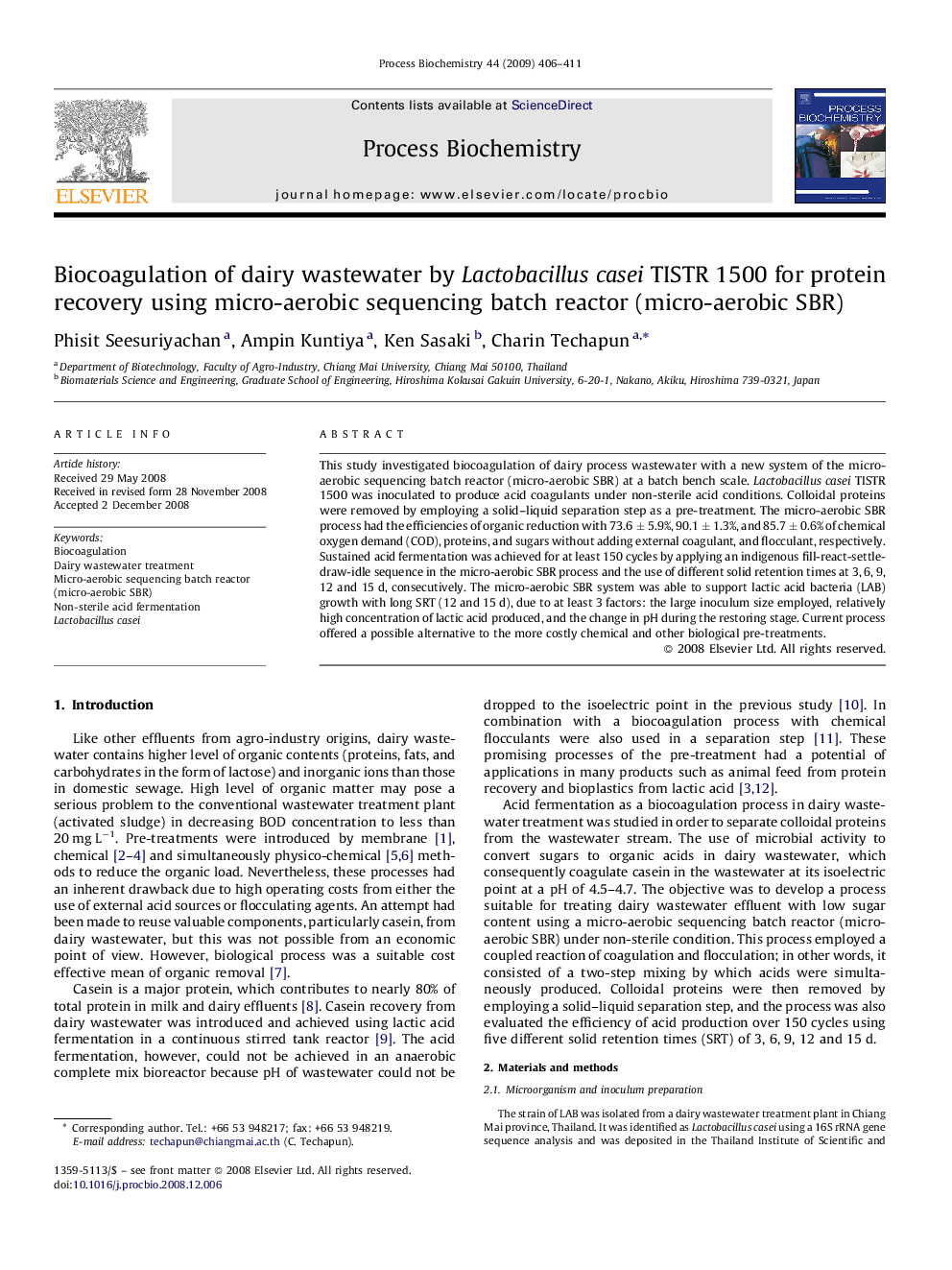| Article ID | Journal | Published Year | Pages | File Type |
|---|---|---|---|---|
| 35547 | Process Biochemistry | 2009 | 6 Pages |
This study investigated biocoagulation of dairy process wastewater with a new system of the micro-aerobic sequencing batch reactor (micro-aerobic SBR) at a batch bench scale. Lactobacillus casei TISTR 1500 was inoculated to produce acid coagulants under non-sterile acid conditions. Colloidal proteins were removed by employing a solid–liquid separation step as a pre-treatment. The micro-aerobic SBR process had the efficiencies of organic reduction with 73.6 ± 5.9%, 90.1 ± 1.3%, and 85.7 ± 0.6% of chemical oxygen demand (COD), proteins, and sugars without adding external coagulant, and flocculant, respectively. Sustained acid fermentation was achieved for at least 150 cycles by applying an indigenous fill-react-settle-draw-idle sequence in the micro-aerobic SBR process and the use of different solid retention times at 3, 6, 9, 12 and 15 d, consecutively. The micro-aerobic SBR system was able to support lactic acid bacteria (LAB) growth with long SRT (12 and 15 d), due to at least 3 factors: the large inoculum size employed, relatively high concentration of lactic acid produced, and the change in pH during the restoring stage. Current process offered a possible alternative to the more costly chemical and other biological pre-treatments.
